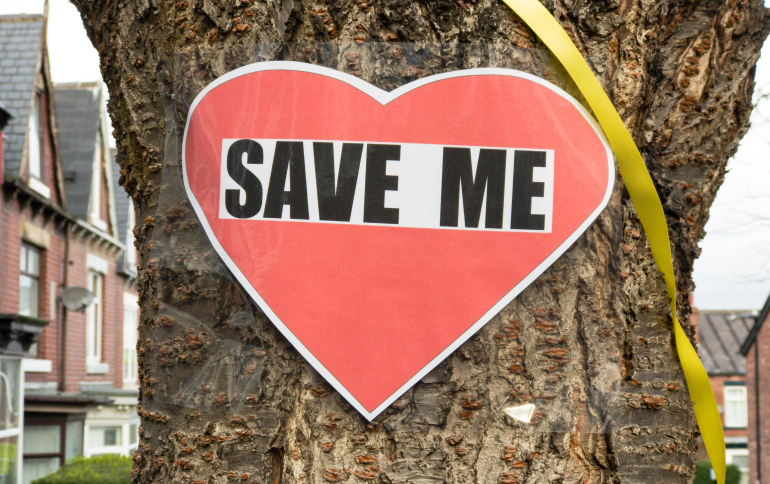The environment is hotting up, but is it our political climate that is bad for street trees?
Camilla Allen

How is it possible that in a period where climate warming is one of the major issues affecting the survival of humanity that street trees are not considered as a vital part of the urban ecosystem, and thus integrated in the political debate?
Nature, wildlife and plants are generally considered as being non-political, but as anyone involved with design and management realises, they are anything but; this is none so more than with street trees.
In modern history in the West trees have been planted along streets as part of improvement schemes since the seventeenth century, and they have continued to be planted increasingly from the nineteenth century onwards. Nowadays street trees are seen as an endeavour of public bodies, but this has not always been the case, even though the most comprehensive schemes were realised by local, regional and national authorities. They have not only aesthetic and directional, but also symbolic meaning.
Trees need resources of water and soil; they need to be maintained and there are legal responsibilities. They also evoke emotion, of attachment, of love and hate. They additionally provide what we now refer to as ‘ecosystem services’, influencing the general climate, by clearing the air of pollutants, providing humidity, reducing dust, providing oxygen, biodiversity, etc. By thus moderating the climate of the urban heat islands street trees contribute to our health and well-being.
As Dr Jan Woudstra has noted, “It is the combination of all these attributes that makes street trees not only vital, particularly by providing more comfortable environments, rural and urban, but also by making them more beautiful.”
This puts street trees in a unique position; we need them, but as a result of their location immediately next to roads they raise all kinds of issues, of ownership, safety, shade, leaf litter, aphid droppings, and as a result they cost. In a period where public funds are more and more restricted, liability and maintenance can weigh heavily on public bodies, who like Sheffield City Council, may want to think creatively about how to reduce cost.
Sheffield did this by letting a 25-year maintenance contract for its roads to Amey, which included care of the trees. The resulting policies, secrecy and obscurity as to the details of the scheme, resulted in the ownership of trees to be contested and questions about the political system, transparency and democracy, and led to public outcry and international reporting. This, however, is just one example of the merging of politics, policies and street trees.
On 19 and 20 September, The Department of Landscape Architecture will be hosting Street Trees and Politics, a conference responding to Sheffield’s street tree crises with contributions from campaigners, academics, journalists, lawyers and more.
This conference will bring together speakers to challenge existing governance structures and decision-making in our cities. The speakers will underline why there are benefits for local and national governments to integrate the long-term, large-scale value of trees and green infrastructure into the economic, social, health and environmental planning for citizens.
For details of speakers and information on how to buy tickets see: https://www.sheffield.ac.uk/landscape/events/street-trees-politics-jan-woudstra